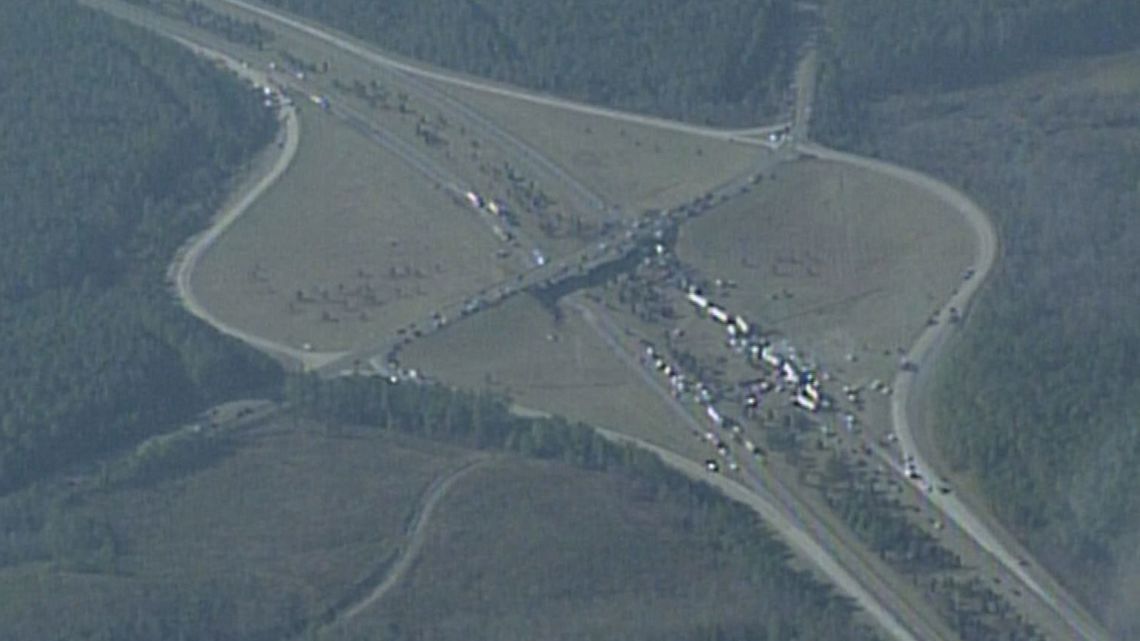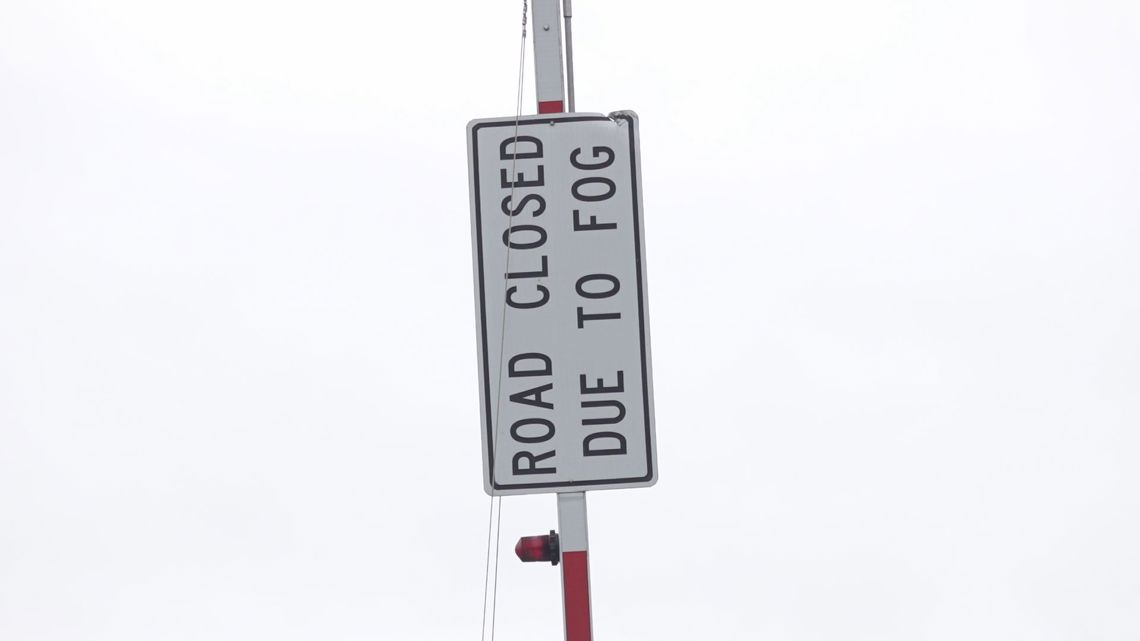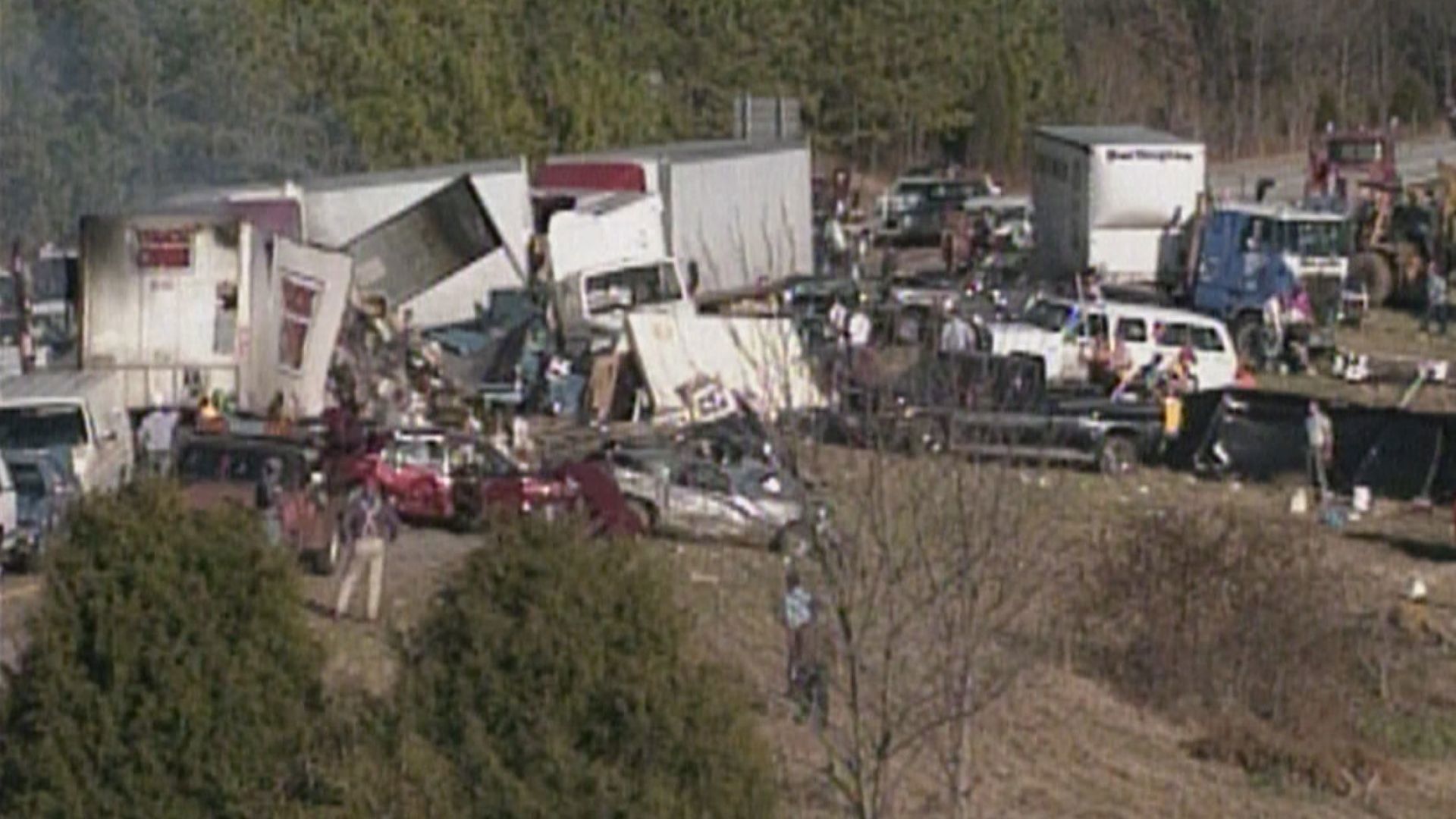MCMINN COUNTY, Tenn. — Thirty-six miles before the Georgia state line on I-75 is the exit to Calhoun, Tennessee. Thousands of cars pass through every day, but on Dec. 11, 1990, this was the spot of, at the time, the largest multi-vehicle crash in the country’s history.
“The sound of it was like gunshots going off. This kept happening. Then you hear people screaming and people running around you. It just seemed to last forever,” said crash survivor David Blumer.
Around 9:10 a.m., a semi-truck headed southbound on I-75 slowed down as fog engulfed the area. Another semi-truck following behind did not slow down.
It hit the semi in front of it—starting a chain reaction that would end with a 99-vehicle pile-up stretching half a mile.


“I can't think anything would have helped except to have stopped before we entered the dense fog, but we didn't know that dense fog was there,” said survivor Frank Wilson.
By 9:20—just 10 minutes later—the crashes had ended, leaving behind a scene filled with vehicles ablaze. 42 people were injured and 12 died.
“There was about three fatalities in that area right there where we were. The Lord was with us that day,” said survivor Bill Pavlis.
Within minutes of the initial crash, authorities were on the scene. 33 different departments responded and had the critically injured out of the wreckage within 45 minutes.


In the days following the crash, the investigation began.
The cause of the thick fog that morning was speculated to be the Hiwassee River near the crash site. The nearby Bowater Paper Plant’s water vapor emissions and cooling ponds near the interstate may have contributed. Experts split their opinion on whether the Bowater plant was responsible.
All sides agreed on one thing—new measures should be put in place to give ample warning of impending fog.
In 1992, the NTSB’s findings ultimately put most of the blame for the massive crash on drivers, stating that they simply failed to slow down enough in the thick fog. The NTSB also recommended driver training courses give more attention to limited visibility situations.
In January 1994, Bowater settled out of court with 44 of the crash victims for a sum of $10 million.
TDOT paid $800,000 to settle lawsuits that alleged negligence in the area where the crash happened.


The stretch of highway between miles 31 and 39 has been named a fog advisory zone and had a computerized fog detection system installed in 1993.
Since the system’s installation, no major multi-vehicle wrecks have happened on this stretch of I-75.

